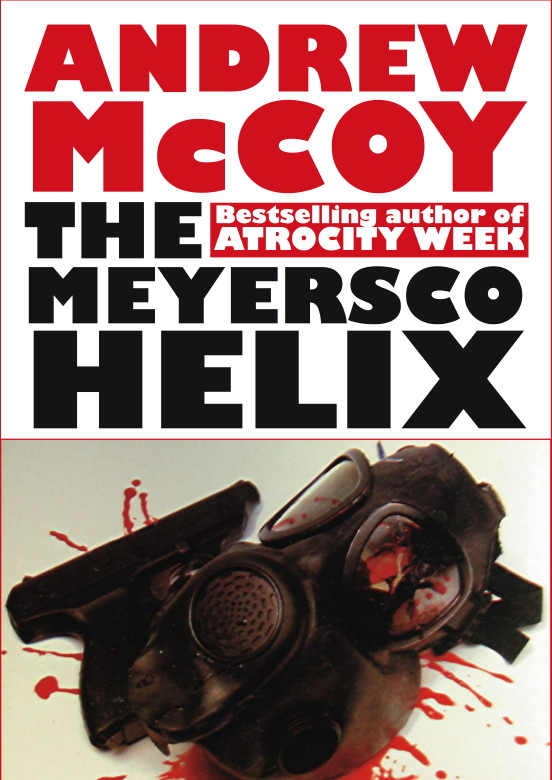You don't need to do fine leatherwork to make a cover for your sketchbook. Nor do you need a king's ransom in fancy leather. With the stores closed, starting at midnight, I had some leather stripped off a scrapped Swedish sofa and a pair of bootlaces. Some planning and an hour's worth of cutting and sewing later I had a sketchbook cover that turns fellow sketchers green with envy. Funny that, considering that they don't notice several finely stitched leather sketchbook covers I have from designer chums...

I made a sketchbook, A5 size, around 6x8 inches, with gessoed canvas pages and a painted cardboard acrylic cover. It is for working en plain air with acrylic. The making and make-up of the book will be described elsewhere. Clearly, unless covered by something more durable, the cover would be damaged in use. I like leather covers but mine were all in use for covering other sketchbooks, and I sure as hell wasn't putting a fine designer-made cover on an acrylic sketchbook to get paint all over it. My wife reminded me of some leather in the loft that was stripped off a Swedish sofa we chucked out. Mmm, and didn't I have a leather-working kit I bought to replace the sleeve press-stud of a favorite but rather worn old leather jacket? It turns out all the tools you need is a carpet knife or carpet scissors and a hole punch. I presume if you're an artist you have a ruler or a tape measure, though it is possible and indeed sometimes necessary to use the book to be covered as the prime measuring device.
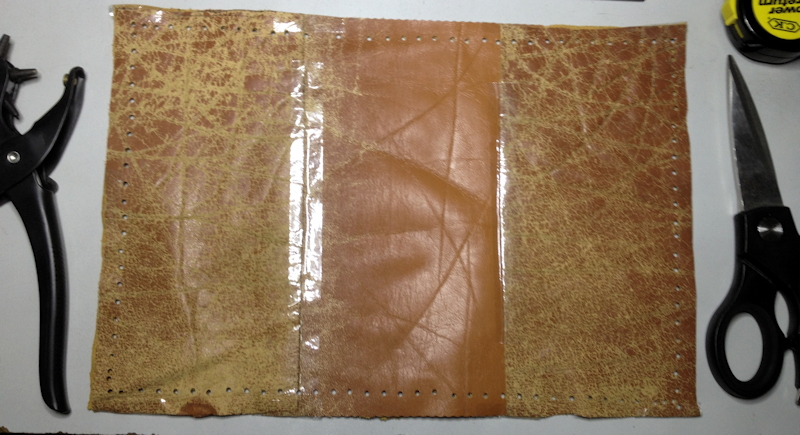
This rustic slipcover will be finished suede side out, so you're looking at the smooth side of the leather when it is inside out. Here the leather is cut oversize and held in position position with tape, inside out, for punching. (Photo after punching. For now, ignore the punching. It is done from the other side.) There are four pieces: the cover, two flaps and the inside spine filler. The latter three pieces are mounted on the cover.

This is the marked-up cover with the three other pieces mounted behind. All pieces are then punched together to make the holes align. That way not too much precision is required! Note that the marking up, with a ballpoint, was done on the wrong, inside side of the leather.

A real sketcher can't resist the urge of a blank surface! It's wonder more of us aren't arrested for graffiti. The sketch on the leather of the inside spine filler is in ballpoint; it will be seen every time the sketchbook is full and a new one is inserted in the cover. The parts are assembled facing the right way and stitched togeher in their correct positions, with double stiching over the inside spine filler, shown in progress here. The loose ends of the laces are hidden behind the flaps.
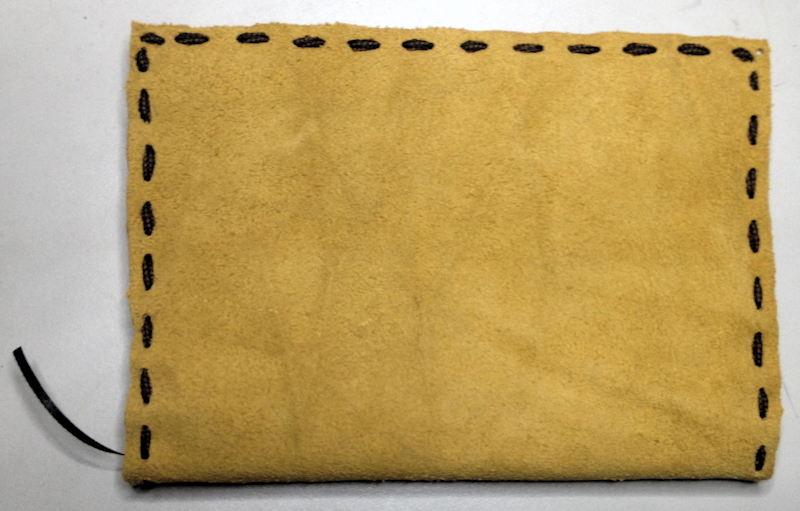
Surplus leather is trimmed off, and here's the rustic cover, cheap enough to sacrifice to acrylic fingerprints, attractive enough to use in public, and your very own handwork, not some soulless manufactured item bought for mere money.
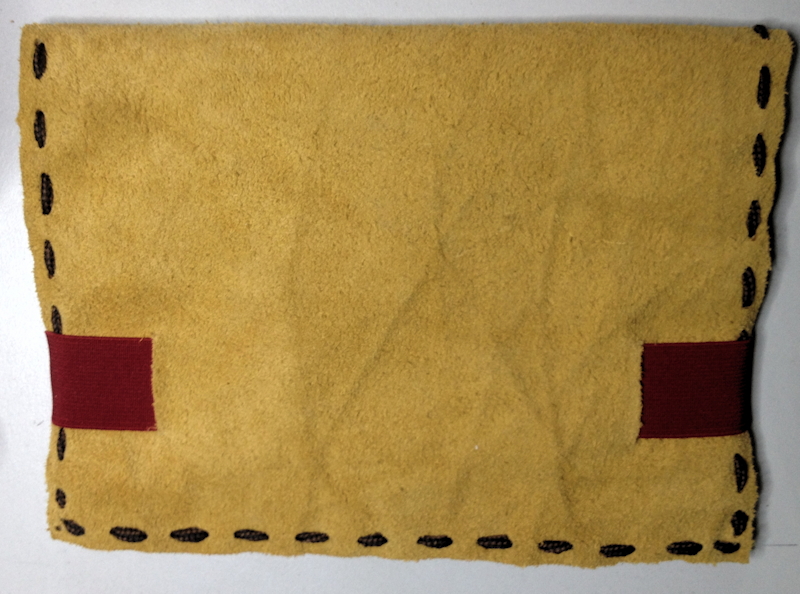
You don't need elastic if you measure right (the length inside the stitching of the flaps is determined by measuring with a soft dressmaker's tape across the covers and spine of the sketchbook you want to fit with the book closed, and then you add a couple of millimeters each side but not more). But I like elastic holding my books closed, and anyway my books get rough handling on my bicycle and in my messenger bag, so a good elastic helps to keep them tidy for longer. Also, when I work with water media on the 90lb/200gsm paper I like to put into sketchbooks, rather than 140lb/300gsm, to fit more pages, an elastic helps to flatten water-buckled pages. Still, it is a rustic sketchbook, so you may not care too much about flattening the pages again.
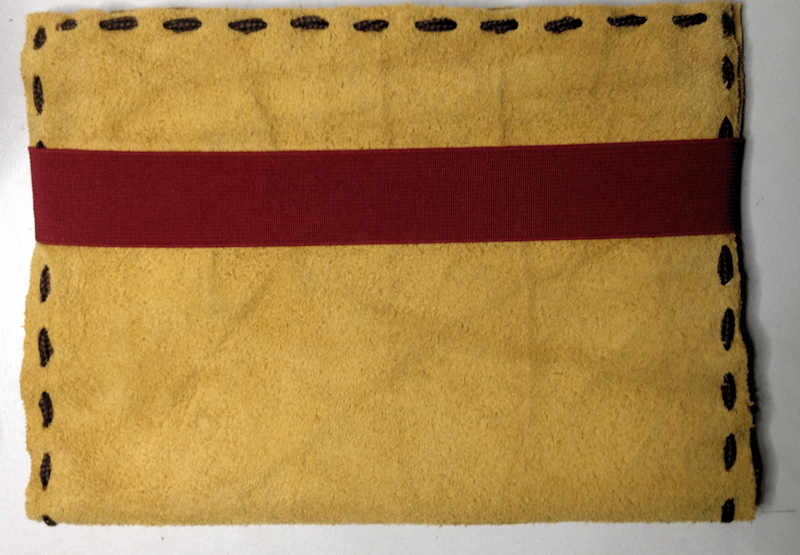
The front, with elastic. The elastic is from a pair of braces whose clips fell apart as I took them out of their box – good quality braces to replace them cost €27 at Marks & Spencer (ouch! that's about $35). My sketchbook is a wide boy in wider braces!
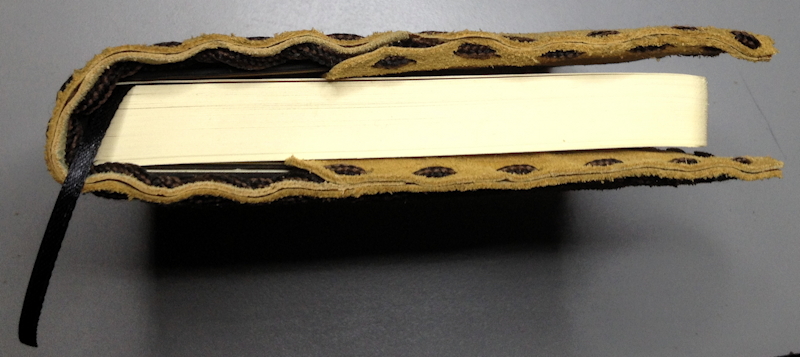
The custom-made rustic leather sketchbook cover with a bought sketchbook inserted to measure how thick an A5 book it can handle: clearly, it can handle a hefty sketchbook if necessary. My custom made sketchbooks are usually on the thin side, so that they are full before they get untidy. The custom-made acrylic sketchbook for which this leather cover is intended (shown in the first photo at the top of the page) is much thinner than this bought sketchbook, but the ability to hold a good-sized hardcover sketchbook adds to the slipcover's versatility. I'm so so pleased with how this one turned out, I think I'll make another one for messy mixed-media experiments.
For photographs of the acrylic sketchbook in its rustic leather cover in plain air use, return to Clean Sketcher, Clean Painter.




